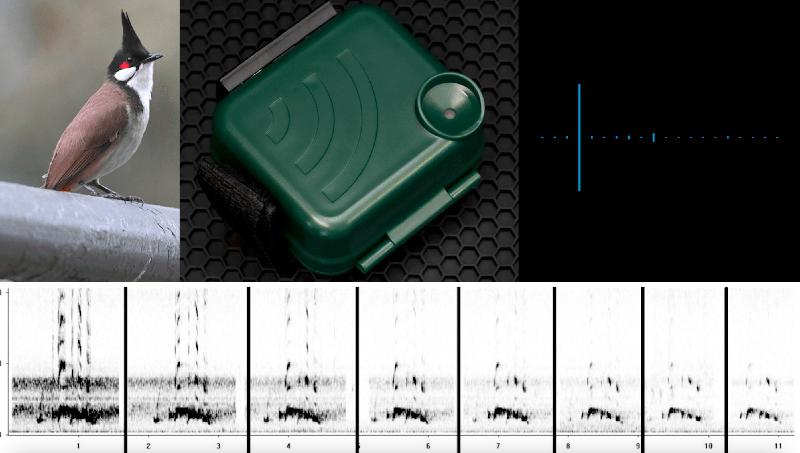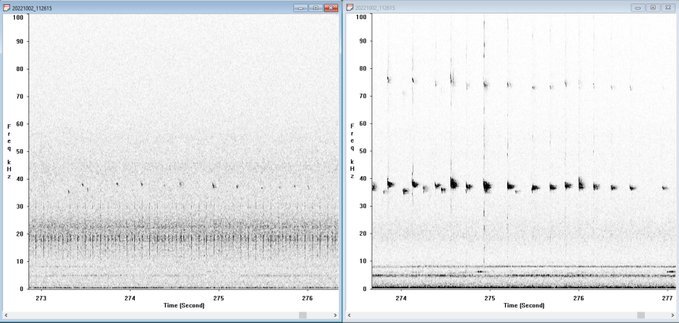
AudioMoth Underwater Case vs. Waterproof Case
What product was used?
Who is using this tech?


Ann To is an independent researcher, wildlife photographer and is currently a Masters student at the Hong Kong University of Science and Technology studying Environmental Science and Management. Some of To’s work has included monitoring the impact of Hong Kong’s urban areas’ ambient noise on bird species and their vocalization responses.
How are they using this tech?
In order to prepare for an upcoming research project utilizing Open Acoustic Devices’ HydroMoth, To had wanted to compare the different audio recordings of birdsong (Red-whiskered Bulbul) captured within the AudioMoth IPX7 Waterproof Case versus that captured in the AudioMoth Underwater Case.

(Photo by Ann To)
For reference, the main differences of the cases are highlighted in the table below along with To’s recordings.
To recorded with the playback song with the same setting of 384k, Med gain on the HydroMoth, while using a ZOOM F1 microphone as a control at a gain of 5/10. All three recorders recorded the song simultaneously with the playback distance increased (1 m , 2 m, 3 m, 5 m, 7 m, 10 m, 15 m, 20 m):

Comparison chart of results
To has also shared her recordings via this Google Drive folder to open with bioacoustics analysis software directly: HydroMoth Folder - Ann To
To also deployed the HydroMoth in both cases to monitor the Chinese Pipistrelle (Hypsugo pulveratus), a bat species located in China, Laos, Thailand, Vietnam, and Hong Kong:

Recording of bats within underwater case (left) and recording within waterproof case (right)
To’s suggestion is to utilize the waterproof case in terrestrial environments to record the most accurate recordings.

Tweet Text: "Performance test of @OpenAcoustics HydroMoth in the 2 cases with birdsong (Red-whiskered Bulbul) playback. Both HydroMoth were with the same setting (384k, Med gain), while ZOOM F1 gain was at 5/10. The 3 WAV files can be found: [link to HydroMoth folder]
@melanieClapham @NilsBouillard @DocSlinky hope this little test helps you :)
And @groupgetscom, I'll need to order more green waterproof cases from you! Hope we can choose the case when purchasing AudioMoth/HydroMoth to suit different needs!
